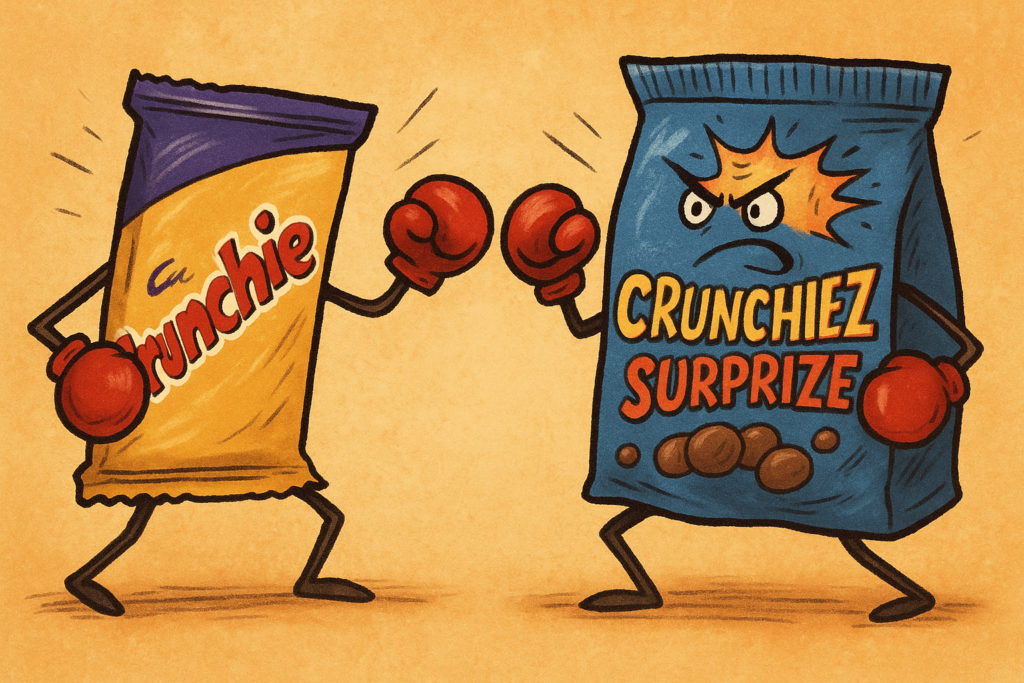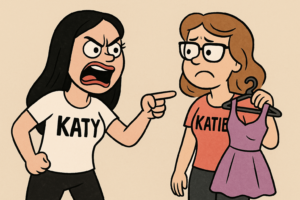Crunch Time for CRUNCHIEZ: Cadbury Blocks Rival Chocolate Mark
 In a sweet victory for brand owners, Cadbury UK Limited has successfully opposed the registration of the trade mark CRUNCHIEZ SURPRIZE in Australia, convincing the Trade Marks Office that the name was too close for comfort to its iconic CRUNCHIE mark.
In a sweet victory for brand owners, Cadbury UK Limited has successfully opposed the registration of the trade mark CRUNCHIEZ SURPRIZE in Australia, convincing the Trade Marks Office that the name was too close for comfort to its iconic CRUNCHIE mark.
Greek confectionery importer Relkon Hellas applied to extend international protection for its mark CRUNCHIEZ SURPRIZE (featuring stylised graphics) for use in relation to chocolate and confectionery in Class 30. Cadbury, relying on decades of use of the CRUNCHIE mark in Australia, opposed the application on several grounds — but ultimately succeeded on one: section 60 of the Trade Marks Act 1995 (Cth).
Under s 60, a trade mark may be refused if another mark had acquired a reputation in Australia before the relevant date, and the use of the new mark would be likely to deceive or cause confusion.
Here’s how the Delegate broke it down:
Reputation:
Cadbury’s CRUNCHIE has been sold in Australia since the 1950s and enjoys widespread recognition. Sales figures, advertising spend, historical ads, and retail presence all pointed to a strong reputation in Australia, particularly for chocolate and confectionery.
Similarity of Marks:
While not identical, CRUNCHIE and CRUNCHIEZ SURPRIZE share key elements:
-
The word CRUNCHIEZ was viewed as a near-plural of CRUNCHIE, differing by just one letter.
-
The additional term SURPRIZE was considered descriptive and did little to distinguish the overall impression.
-
Stylisation differences weren’t enough to avoid confusion.
Likely Confusion:
The Delegate found that ordinary consumers could reasonably wonder whether CRUNCHIEZ SURPRIZE products were from the same source as Cadbury’s CRUNCHIE line — especially when both appeared in close proximity in stores like Kmart and The Reject Shop.
Interesting side note – the evidence of where the competing brands sat in places like K-mart and The Reject Shop was adduced not by Cadbury, but by Relkon Hallas, whose lawyers used that evidence to submit that because the brands were not literally side-by-side, this supported a conclusion that there would be no confusion.
That turned out to be a bit of a strategic fail as the Delegate thought this evidence supported a finding of confusion because it was clear evidence that the relatively new CRUNCHIEZ SURPRIZE mark was being advertised in close proximity to the long-standing and very famous CRUNCHIE mark.
Oops.
The Outcome
Protection for CRUNCHIEZ SURPRIZE was refused in full. Cadbury was awarded costs, and Relkon Hellas left with a lesson in brand proximity.
Key Takeaways for IP Owners
-
Reputation is a powerful shield. Long-standing brand presence, even on basic goods like chocolate bars, can stop later marks in their tracks.
-
Adding a “z” won’t save you. Minor spelling tweaks and descriptive add-ons (like “Surprize”) rarely neutralise the risk of confusion.
-
Stylisation matters — but not enough. Graphic flourishes won’t rescue a mark if the words dominate and invite association with a famous brand.
-
Proximate promotions can pummel you. If your goods end up shelved near a well-known competitor, that visual proximity will weigh heavily in the analysis.
IP Mojo Takeaway:
If you’re naming a new chocolate product and your trade mark sounds like a Cadbury classic… you’re probably skating on thin nougat.
 What happens when your new brand smells a little too much like the towels next door?
What happens when your new brand smells a little too much like the towels next door?